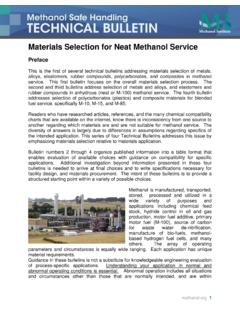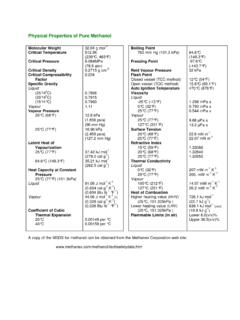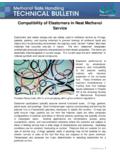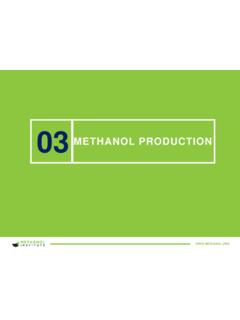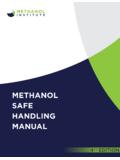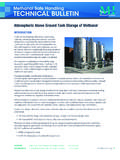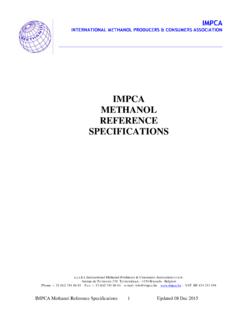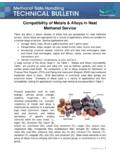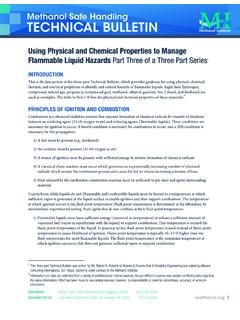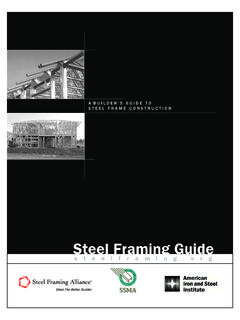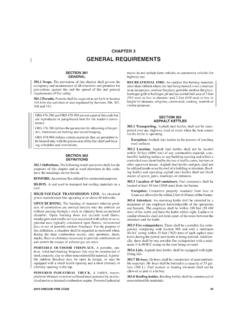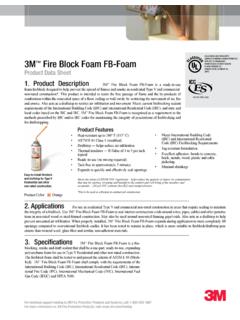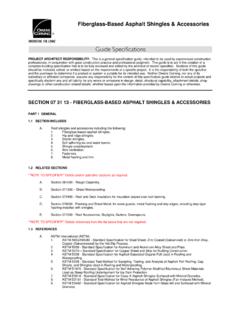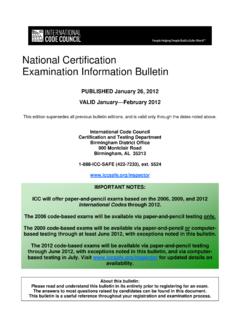Transcription of Methanol Drum Transport, Handling, and Storage
1 SINGAPORE Suntec Tower Three 8 Temasek Blvd Singapore 038988 + WASHINGTON DC 4100 North Fairfax Drive, Suite 740, Arlington, VA 22203 1 Methanol drum transport , Handling, and Storage INTRODUCTION Totes, drums (55 gallon), and cans (5 gallon, and 1 gallon) are used to transport , store, and dispense Methanol in a wide variety of circumstances by low volume users. Non-bulk transport and Storage of hazardous material are regulated activities in the and some other countries. Failure to adhere to applicable regulations may be punishable by fines and imprisonment.
2 Requirements are specific to the country and the circumstances; however requirements will generally consist of the following; shipping papers, container labeling, transport vehicle placarding, driver training and licensing, and availability of emergency repines equipment. If you are not a designated hazardous materials carrier, then it may be against the law to transport Methanol in totes, drums, and cans. Do not transport Methanol in your personal vehicle. Do not store Methanol totes, drums, or cans indoors or in your home. Storage requires precautions for flammable loading, fire-safe Storage , ventilation, spill containment, spill cleanup, and fire suppression.
3 Never use mouth suction to siphon-transfer Methanol . Methanol liquid and vapor are toxic to humans. Exposure is cumulative and may result in harm if vapor or liquid are inhaled, ingested, or contacted with skin for extended periods of time. Methanol (CAS: 67-56-1, NIOSH: PC-1400000, DOT: 1230, UN-1230, NA-1230) is classified by the international Code Council (ICC) and the National Fire Protection Agency (NFPA) under the Uniform Fire Code as a IB Flammable Liquid and by the United Nations as a 1993 Class 3 Flammable Liquid. NFPA and Department of Transportation (DOT) rank Flammability as a 3 primary hazard, and toxicity, as a ranked secondary hazard.
4 Guidelines for handling IB flammable liquids are provided by codes and standards published by ICC, NFPA, and the international Fire Code. ICC and NFPA guidelines are recommended as best practices, but are not mandatory unless deemed so by national, or local authority. Within the United States, local authority generally rests with the local Fire Marshal. Mandatory regulations have been developed within the United States by the Occupational Safety and Health Administration (OSHA), an agency of the federal government. Specific safe handling practices are given under three separate regulations for various industries, circumstances, and work environments: General Industry: 29 Code of Federal Regulations (CFR) Construction Industry: Shipyard Industry: ).
5 Methanol drum transport , Handling, and Storage (Continued) SINGAPORE Suntec Tower Three 8 Temasek Blvd Singapore 038988 + WASHINGTON DC 4100 North Fairfax Drive, Suite 740, Arlington, VA 22203 2 Guidelines for international transportation of flammable liquids are available from the following bodies: international Maritime Organization, international Maritime Dangerous Goods (IMDG) Code (volumes, 1, 2, and Supplement) international Air transport Association (IATA), Dangerous Goods Regulations Intergovernmental Organization for international Carriage by Rail, Regulations concerning the international Carriage of Dangerous Goods by Rail.
6 Transportation within the United States is governed by the Department of Transportation (DOT), an agency of the federal government. DOT regulations are available in 49 CFR which can be accessed on the internet or purchased in book format at a nominal cost over the internet. Drums, totes, and cans are transported, stored, and handled by the vast majority of Methanol users. This discussion focuses on 5-gallon and 55-gallon quantities packaged in metal containers. Plastic containers are not recommended for long-time Storage or shipment of Methanol because the solvent properties of Methanol may degrade the plastic, causing the containers to lose structural integrity.
7 Storage OF Methanol -CONTAINING TOTES, DRUMS, AND CANS Guidance for safe Storage of Methanol is provided by ICC, NFPA, and the international Fire Code. ICC and NFPA guidelines are available in: NFPA 1, Uniform Fire Code. NFPA 30, Flammable and Combustible Liquids Code. Methanol Storage areas should be curbed with a compatible material such as concrete, ventilated to prevent accumulation of vapors, and drained to a safe location which is remote from the Storage area. Storage areas should be equipped with vapor, and heat detector/alarms.
8 Because Methanol burns with a transparent, non-luminous blue flame, combustion will likely not be detected by standard smoke detectors, and luminous-type flame detectors. Carbon monoxide and carbon dioxide detectors may serve in place of smoke detectors and luminous flame detectors. First responders use infra-red detection methods to determine if combustion is occurring. It is recommended that this type of detector be installed and alarmed to monitor Methanol tote, drum , and can Storage areas. Detection should be redundant with detectors positioned at right angles to one another.
9 If more than several drums are stored, then consideration should be given to automatic fire suppression using either fine water mist spray, or alcohol resistant fire-fighting foam (AR-FFF). Storage of multiple containers is subject to limitations on stacking height, and container density loading. Refer to the listed codes to obtain guidance, which is specific to your circumstance. Tote and drum containers must be stored outside, not within a structure, unless placed in a liquid Storage room or warehouse meeting the requirements for flammable liquids Storage buildings.
10 Five-gallon and 1-gallon containers may be stored within a building provided they are contained in a fire-safe cabinet which is grounded, and vented to an outside safe location which includes an explosion suppression devise. Methanol drum transport , Handling, and Storage (Continued) SINGAPORE Suntec Tower Three 8 Temasek Blvd Singapore 038988 + WASHINGTON DC 4100 North Fairfax Drive, Suite 740, Arlington, VA 22203 3 SHIPMENT OF TOTES, DRUMS, 5-GALLON CANS, AND 1-GALLON CONTAINERS Guidance for shipment of Methanol via the Postal Service is contained in United States Postal Service Publication 52, 343 Flammable and Combustible Liquids (Hazard Class 3).
